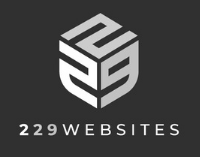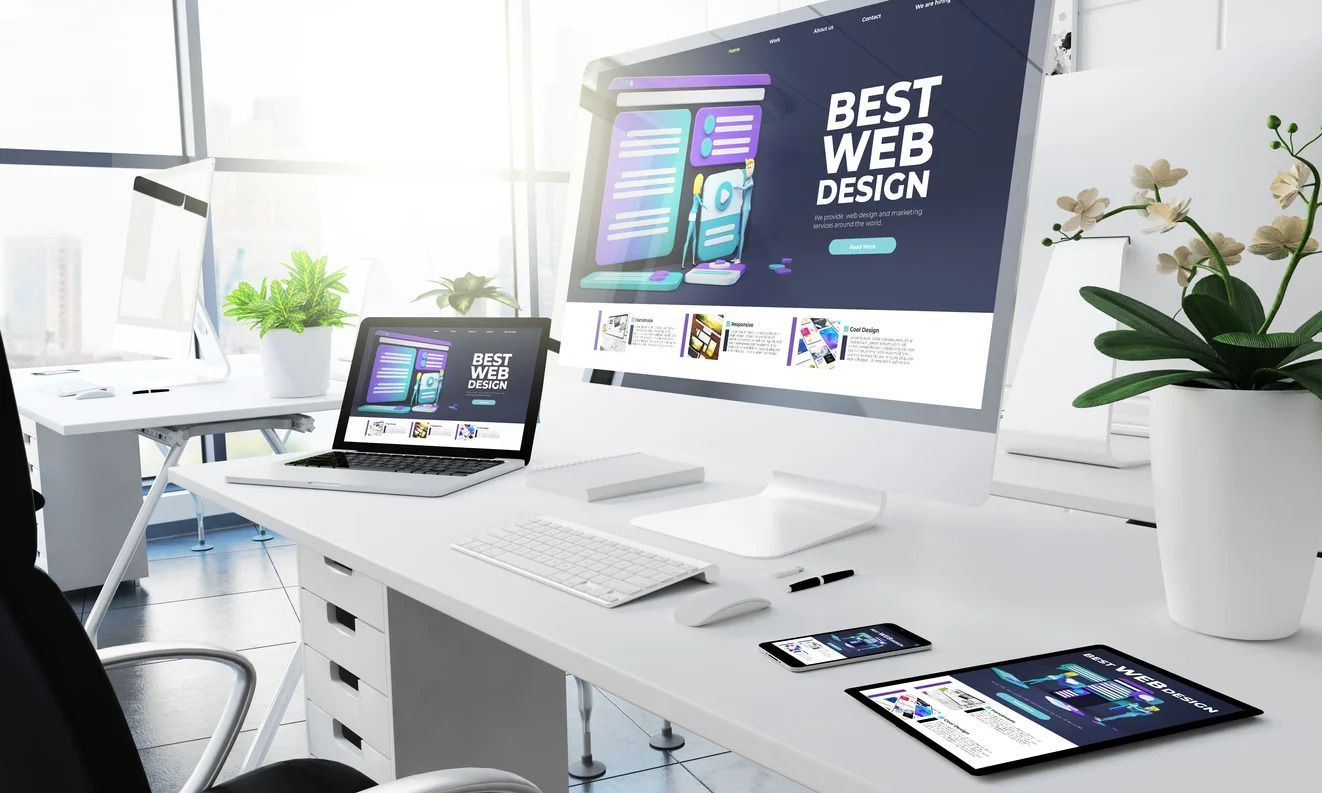Creating a Professional Website: Expert Tips for Design and Development
Creating a professional, user-friendly, and engaging website is no longer a luxury, but a necessity.

In 2023, with the digital landscape evolving continually, a website is your virtual handshake—the first impression you create on your prospective clients or customers. If you're grappling with coding basics or feeling puzzled about responsive design, this blog post will be your guiding light. Imbibing insights from top web developers and design gurus globally, we have distilled expert tips for crafting an exemplary website. Today's blog will traverse through website aesthetics to smooth navigation, leading you towards impressive online visibility. Let's unlock the secrets of successful website design and development without further ado! Prepare for an enlightening journey that could revolutionize your digital presence.
Here are some tips to create a professional website: choose limited colors for your palette, leave ample white space, use legible fonts, include high-quality personal photos, add clear navigation and search functionality, write a well-crafted About page, incorporate Call-to-Action (CTA) buttons, keep headers and footers consistent for brand recognition, ensure mobile responsiveness, and provide easy-to-use contact forms. By following these tips, you will be on track to create a polished and professional-looking website.
Essentials of Website Design
When it comes to creating a professional website, there are several key elements you need to consider. These essentials will help you design a site that is visually appealing, user-friendly, and functional. Let's explore some of these essential elements in more detail.
First and foremost, a limited color palette can go a long way in creating a cohesive and professional look on your website. By using only a few carefully chosen colors, you can ensure that your site appears well-designed and visually consistent. Tools like Coolors can help you generate color schemes that work well together.
Another important aspect of website design is ample white space. Leaving plenty of white space around your content prevents your pages from appearing cluttered and overwhelming to visitors. White space can also be used strategically to guide users' attention to the most important elements on your site.
Choosing a legible font is crucial for readability. While it may be tempting to use fancy or unique fonts, it's best to stick with tried-and-true options that are easy to read across different devices. Pairing two fonts together can create visual interest while still maintaining readability.
Incorporating high-quality personal photos is another element that adds authenticity and professionalism to your website. Using your own images rather than relying solely on stock photos helps establish trust with your audience and showcases the uniqueness of your brand.
Clear navigation and search functionality are vital in helping visitors find what they need on your site quickly and easily. Make sure that your navigation menu is intuitive and categorizes information logically. Additionally, implementing a search function allows users to search for specific content or products without feeling overwhelmed.
Crafting a well-written About page is often overlooked but essential for building user trust and loyalty. Your About page provides an opportunity to share your brand's story, mission, and values. Use this space to connect with your audience on a personal level and showcase what sets you apart from your competitors.
Including Call to Action (CTA) buttons throughout your website is an effective way to boost conversion rates. These buttons prompt users to take specific actions, such as subscribing to a newsletter or making a purchase. Make sure your CTAs are visually appealing and clearly communicate the action you want users to take.
Consistency is key when it comes to headers and footers. By keeping these elements consistent across all pages of your site, you create a sense of brand recognition and make it easier for users to navigate. Consider including your brand's logo in one or both of these areas to reinforce your brand identity.
Now that we have covered some essential elements of website design, let's dive into the topic of choosing a vibrant theme for your website.
Choosing a Vibrant Theme

The theme you choose for your website sets the tone and overall aesthetic for your brand. A vibrant theme can help convey energy, excitement, and a strong visual presence. When selecting a vibrant theme, there are a few considerations to keep in mind.
Firstly, think about the nature of your business or brand. Are you in the creative industry where bright colors are expected and celebrated? Or are you in a more formal industry where a touch of vibrancy can bring life to what might otherwise be perceived as dull? Understanding the personality and values of your business will guide you in choosing a vibrant theme that aligns with your overall objectives.
Another factor to consider is the message you want to convey through color psychology. Different colors evoke different emotions and can influence how visitors perceive your brand. For example, red can signify passion and urgency, while blue can convey trustworthiness and reliability. Choose colors that not only reflect your brand but also resonate with your target audience.
Furthermore, ensure that the vibrant theme you choose provides sufficient contrast between text and background colors to maintain readability. It's crucial that users can easily read the content on your website without straining their eyes.
Lastly, remember that a vibrant theme doesn't mean overwhelming your visitors with too many colors. Strive for a balance between vibrancy and simplicity. Too many bright colors can create a chaotic appearance, detracting from your overall message and brand identity.
While a vibrant theme can be eye-catching and memorable, it's important to consider whether it aligns with your target audience's preferences and expectations. Some individuals may prefer a more minimalist design or subdued color scheme. It's essential to strike a balance between vibrancy and catering to the preferences of your specific target market.
With these considerations in mind, you can now move forward confidently in choosing a vibrant theme that reflects your brand's personality and engages your target audience.
- When selecting a vibrant theme for your website, it's important to consider your business's nature, the message you want to convey through color psychology, readability, and balancing vibrancy with simplicity. Remember that while a vibrant theme can be memorable, it's important to strike a balance between vibrancy and catering to the preferences of your target audience. By keeping these considerations in mind, you can confidently choose a vibrant theme that reflects your brand's personality and engages your target audience.
Incorporating Meaningful Images and Videos
In the digital landscape, where attention spans are dwindling, incorporating meaningful images and videos is essential for creating an engaging and professional website. Visual elements have the power to captivate users and convey information more effectively than plain text alone. When used strategically, these elements can enhance the user experience and leave a lasting impression. But what constitutes a meaningful image or video?
A meaningful image or video is one that aligns with your website's purpose and content. It should serve a purpose beyond mere decoration - it should tell a story, evoke emotions, or provide valuable information. For instance, if you're running an e-commerce site, high-quality product images from different angles can help potential buyers make informed decisions. On the other hand, if you're showcasing a service, consider incorporating videos demonstrating how your offering solves problems or enhances lives.
Let's say you run a fitness blog where you share workout routines and healthy recipes on your fitness website. Instead of using generic stock photos, imagine including visually appealing images of people engaged in various exercises or vibrant overhead shots of nutritious meals. These visuals not only add visual appeal but also help readers envision themselves on a fitness journey.
Tips for Incorporating Meaningful Images and Videos
1. Use high-quality visuals that are relevant to your website's content
2. Optimize file sizes to ensure fast loading times
3. Add alt text to images for accessibility and SEO purposes
4. Consider using videos to provide demonstrations or tutorials
5. Place visuals strategically to enhance the overall design and flow of your website
With meaningful images and videos incorporated into your website design, let's now shift our focus to another crucial aspect - developing professional content.
Developing Professional Content

While visually captivating elements are essential for web design, they must be complemented by well-crafted and professional content. Your website's content is the backbone of its overall effectiveness - it informs, educates, persuades, and builds trust with your audience. So, how can you develop professional content that resonates with your visitors?
Start by identifying your target audience and understanding their needs, preferences, and pain points. This knowledge will guide your content creation process and ensure that you provide value to your readers. Whether you're writing blog posts, creating product descriptions, or designing landing pages, aim for clarity, accuracy, and relevance. Craft compelling headlines and introductions to capture attention and entice visitors to continue reading.
Let's consider an example where you run a travel website specializing in adventure trips. Your target audience may consist of outdoor enthusiasts seeking thrilling experiences. To develop professional content for this audience, focus on highlighting unique destinations, sharing firsthand experiences through stories and photos, and offering practical advice on trip planning and safety measures. By delivering insightful content that speaks directly to their interests and aspirations, you establish yourself as a trusted resource in the adventure travel niche.
Crafting professional content is akin to constructing a bridge between your website and its visitors. Just like a sturdy bridge connects two points seamlessly, well-written content bridges the gap between your brand's message and your audience's needs.
Incorporating meaningful images and videos creates an immersive visual experience on your website while developing professional content ensures that users find valuable information they can trust. As we wrap up the discussion on these two crucial aspects of creating a professional website, let's reflect on the impact they have on overall user satisfaction and engagement.
Writing Engaging and Useful Content
When it comes to creating a professional website, one of the most crucial aspects is the content you provide. In today's fast-paced digital world, users have an abundance of information at their fingertips, making it essential to captivate their attention with engaging and useful content.
Engaging content goes beyond mere text on a page; it should evoke emotions, spark curiosity, and inspire action. This can be achieved through storytelling, using relevant and relatable examples, and incorporating persuasive language that resonates with your target audience. For instance, if you're designing a website for a travel agency, captivating your visitors with vivid narratives about exciting destinations can foster a sense of wanderlust and encourage them to explore further.
Moreover, useful content is key to establishing trust and credibility with your website's visitors. It should provide valuable information or solve problems that your target audience may encounter. Conduct thorough research to understand what your users are searching for and create content that addresses their needs. Whether it's educational articles, tutorials, or informative videos, ensure that the content you produce adds value and answers the questions your audience may have.
Let's say you're creating a website for a fitness brand targeting beginners who want to start exercising regularly. Instead of simply showcasing products, consider incorporating instructional videos demonstrating basic workouts or providing beginners' guides on overcoming common challenges in fitness journeys. By offering useful content, you position yourself as an authority in the field, which builds trust with your visitors.
Remember that consistency is crucial when it comes to content creation for your professional website. Regularly update your blog section or news feed with fresh and relevant articles. This not only keeps users engaged but also boosts your search engine rankings as search engines favor websites that provide regular updates.
Now that we've explored the importance of writing engaging and useful content for your professional website, let's shift our focus to another vital aspect: the mobile-responsive layout.
Importance of a Mobile-Responsive Layout

In today's digital landscape, it's imperative to cater to the growing number of users accessing websites through mobile devices. With the rise of smartphones and tablets, having a mobile-responsive layout for your website is no longer an option—it's a necessity.
Picture this scenario: A user visits your website on their smartphone, excited to explore your services or products. However, they're met with a clunky and unresponsive design that requires excessive scrolling and zooming in just to read the text or view the images. Frustrated, they quickly leave your website, taking their business elsewhere.
By prioritizing a mobile-responsive layout, you ensure that your website adapts seamlessly to various screen sizes and resolutions. This creates an optimal user experience regardless of whether someone accesses your site from a desktop computer, laptop, tablet, or smartphone. A well-designed responsive layout automatically adjusts elements like text size, image placement, and navigation menus to provide a cohesive and visually appealing experience across all devices.
Think of a mobile-responsive layout as building architectural structures with flexible materials that can be adjusted based on the available space. Just as buildings should adapt to different environments without sacrificing functionality or aesthetics, websites should mold themselves to the screen size while maintaining usability and visual appeal.
Beyond enhancing user experience, a mobile-responsive layout is crucial for search engine optimization. Major search engines such as Google prioritize mobile-friendly websites in their search results, making them more visible to potential visitors. In other words, if your website isn't mobile-responsive, it may get pushed down in search rankings, resulting in missed opportunities for organic traffic and potential customers.
Ultimately, creating a professional website that incorporates engaging and useful content along with a mobile-responsive layout lays the foundation for success in today's digitally driven world.
Enhancing User Experience
In the world of web design and development, user experience (UX) plays a pivotal role in creating a successful website that keeps visitors engaged and encourages them to return. A positive UX not only increases user satisfaction but also contributes to higher conversion rates and better overall performance. To enhance user experience, it's crucial to consider several key factors.
First and foremost, one must focus on website speed. In today's fast-paced digital environment, users have little patience for slow-loading websites. Slow speeds can lead to frustration, increased bounce rates, and ultimately, loss of potential customers. Optimizing page load times by optimizing images, minimizing scripts, and utilizing caching techniques can greatly improve UX.
Next, mobile responsiveness is vital given the increasing number of users accessing websites from their smartphones or tablets. Responsive design ensures that your website adapts seamlessly to different screen sizes and provides an optimal viewing experience across devices. Users should be able to navigate and interact with your site effortlessly, regardless of whether they're on a desktop computer or a mobile device.
Additionally, content organization and readability are essential aspects of enhancing user experience. A well-structured layout with clear headings, subheadings, and paragraphs makes it easier for users to scan and absorb information quickly. Utilizing white space effectively helps avoid cluttered pages that overwhelm visitors. Ensuring legible font sizes and contrasting colors further contribute to enhanced readability.
Another critical element of UX improvement is focusing on intuitive navigation. Visitors should be able to find the information they need without confusion or frustration. Organize the content logically and offer clear menu options or search functionality for easy access. With simple navigation menus that guide users smoothly through your website, you can empower them to engage more deeply with your content.
Lastly, be mindful of calls to action (CTAs) strategically placed throughout your site. These prompts encourage users to take desired actions, such as subscribing to a newsletter, making a purchase, or submitting a contact form. Clearly distinguish CTAs using visually appealing buttons and persuasive copy.
By paying careful attention to these aspects, you can create a seamless and enjoyable user experience that leaves a lasting impression on your website visitors.
Structuring Navigation Menu for Easy Accessibility
One of the fundamental elements of enhancing user experience is ensuring easy accessibility through a well-structured navigation menu. A poorly designed menu can leave users feeling confused and frustrated, leading them to abandon your site entirely. To structure your navigation menu effectively, consider the following tips:
1. Keep it simple: Overcomplicating your navigation menu with too many options can overwhelm users. Aim for a concise and streamlined menu that provides clear choices without overwhelming visitors with an extensive list of links.
2. Categorize and prioritize: Organize your content into logical categories and subcategories to help users find what they're looking for easily. Prioritize the most important pages or sections by placing them prominently in the main menu or submenus.
3. Use descriptive labels: Make sure the labels in your navigation menu accurately reflect the content they represent. Clear and descriptive labels provide clarity to users, enabling them to navigate with confidence.
4. Include search functionality: In addition to a well-structured menu, incorporating a search bar allows users to quickly find specific information. This feature is especially helpful for websites with extensive content or e-commerce platforms with numerous products.
5. Consistency is key: Maintain consistency throughout your website by using the same navigation menu layout across all pages. Consistent placement and design elements make it easier for users to navigate as they become familiar with the overall structure.
6. Responsive design: Ensure your navigation menu remains accessible and easy to use across different devices by implementing responsive design techniques. Elements should adjust seamlessly based on screen sizes, allowing users on mobile or tablet devices to navigate effortlessly.
By implementing these strategies, you can structure your navigation menu in a way that provides easy accessibility and improves the overall user experience of your website.
"A well-structured navigation menu is like a roadmap for users, guiding them through your website with ease and clarity."
Examining Aesthetics for User Engagement
When it comes to creating a professional website, aesthetics play a significant role in engaging and retaining users. The way your website looks and feels can make a lasting impression on visitors and influence their decision to explore further or leave. It is crucial to carefully examine the aesthetics of your website to ensure a positive user experience.
One important aspect of aesthetics is the color palette used throughout your website. A limited color palette can help create a cohesive and professional look. Consider using tools like Coolors to generate color schemes that are visually appealing and consistent with your brand identity. By using a limited number of colors, you can maintain visual harmony and prevent overwhelming the user with too much variety.
Imagine you land on a website where each page has a different color scheme, making it challenging to navigate and understand the purpose behind each section. In contrast, if you visit another website with a well-curated color palette that complements the brand's identity, it instantly creates a sense of professionalism and coherence.
White space, also known as negative space, is another essential aspect of aesthetics that can greatly impact user engagement. Leaving ample white space around elements on your pages prevents them from appearing cramped or cluttered. Use white space strategically to guide users' attention towards important elements such as call-to-action buttons or key information. This helps improve readability and overall user experience.
Choosing a legible font is imperative for effective communication with users. Opt for fonts that are easy to read across different devices and screen sizes. Aim for a good balance between readability and aesthetic appeal. Additionally, consider pairing two fonts together—one for headers and another for body text—to create visual hierarchy while maintaining consistency throughout your website.
Authenticity is key when it comes to engaging users through aesthetics. Incorporating high-quality personal photos relevant to your brand or content can provide an authentic touch. Avoid relying too heavily on stock photos, as they can appear generic or impersonal. Personal photos help establish a connection with your audience and convey a sense of trustworthiness.
Imagine you visit a website that sells handmade jewelry. Instead of using generic stock photos of jewelry, the website features real-life images of artisans carefully crafting each piece, showcasing the craftsmanship and dedication behind the products. This personal touch can significantly enhance user engagement and build trust.
In addition to visuals, navigation and search functionality are critical for user engagement. Clear navigation helps visitors find what they need easily, leading to a positive experience. Well-designed menus and intuitive search functions make it convenient for users to navigate your site and quickly find the information they are looking for. Prioritize ease of use and accessibility when designing these elements, considering factors like mobile responsiveness and compatibility with assistive technologies.
The aesthetics of your website should also extend to other key elements that contribute to user engagement, such as a well-written About page, Call-to-Action (CTA) buttons, consistent headers and footers, mobile responsiveness, and easy-to-use contact forms. Let's explore these elements further to gain a holistic understanding of creating a professional website.

SEO Services
West Virginia
- Morgantown WV
- Huntington WV
- Martinsburg WV
- Parkersburg WV
- Wheeling WV
- Beckley WV
- Fairmont WV
- Clarksburg WV
- Princeton WV
Virginia
- Richmond VA
- Virginia Beach VA
- Alexandria VA
- Arlington VA
- Chesapeake VA
- Norfolk VA
- Fairfax VA
- Roanoke VA
- Fredericksburg VA
- Charlottesville VA
Ohio
- Columbus OH
- Cleveland OH
- Cincinnati OH
- Dayton OH
- Toledo OH
- Akron OH
- Canton OH
- Youngstown OH
- Dublin OH
- Westerville OH
Kentucky
- Louisville KY
- Lexington KY
- Bowling Green KY
- Paducah KY
- Owensboro KY
- Florence KY
- Elizabethtown KY
- Richmond KY
- Frankfort KY
- Ashland KY
North Carolina
- Charlotte, NC
- Raleigh, NC
- Durham, NC
New Jersey
- Morristown, NJ
- Jersey City, NJ
- Hoboken, NJ
- Long Beach Island, NJ
- Cherry Hill, NJ
Florida
- Orlando, Florida
- Tampa, Florida
- Jacksonville, Florida
Website Design Services
West Virginia
Virginia
Ohio
MAIN OFFICE
Have a question?
Email us
We will get back to you as soon as possible
Please try again later








